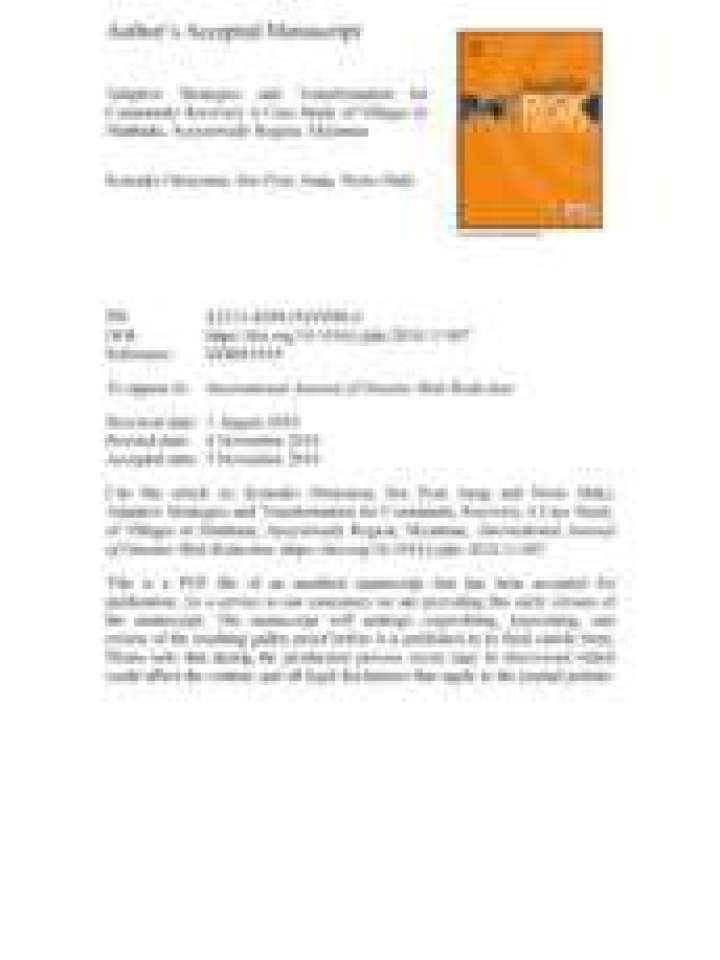Adaptive strategies and transformation for community recovery: a case study of villages in Hinthada, Ayeyarwady Region, Myanmar
This research aims to identify strategies for long-term recovery related to housing, livelihood, and community activities in villages divided by the dyke in Hinthada Township, Ayeyarwady Region, Myanmar, using household surveys. The results show that unprotected villages have adapted their elevated houses against floods and planted water-resistant crops as an income source. Protected villages have relied on mitigation and maintenance of the dyke along with non-elevated houses, and have transformed their livelihoods in different ways.
Myanmar is one of the highest meteorological hazard risk countries in the world, owing to geographical factors such as a vast delta along the Ayeyarwady River. As the Ayeyarwady Region has suffered from seasonal floods in the monsoons since historical times, long earthen dykes were constructed in the 19th century during the British colonial period. As a result, one village was divided into two by a dyke about 150 years ago. The region was severely affected by floods in 2015. Most of the unprotected villages were inundated for two to three months, while villages inside of the dyke were protected.
Explore further

